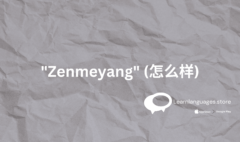Directional Verbs “来” (lái) and “去” (qù) in Chinese
Directional Verbs “来” (lái) and “去” (qù) in Chinese
Estimated reading time: 4 minutes

Level: A2 / HSK1
Similar to: Used for Expressing Movement
Keywords: 去 (qù), 来 (lái)
Topic: Directional Verbs “来” (lái) and “去” (qù)
Introduction:
The directional verbs “来” (lái) and “去” (qù) are essential for expressing movement in Chinese. “来” (lái) means “come” (towards the speaker), while “去” (qù) means “go” (away from the speaker). Learning these verbs is crucial as they form the basis of many future grammar patterns.
1. Basic Usage
Structure:
- 来 / 去 + Place
Explanation:
When using 来 (lái) or 去 (qù), remember:
- 来 (lái) is used when the action is moving towards the speaker’s current location.
- 去 (qù) is used when the action is moving away from the speaker’s current location.
Example Sentences:
- 妈妈要去超市。
(Māma yào qù chāoshì.)
- English: Mom will go to the supermarket.
- Hindi: माँ सुपरमार्केट जाने वाली हैं।
(Maa supermarket jaane waali hain.)
- 老板今天来公司吗?
(Lǎobǎn jīntiān lái gōngsī ma?)
- English: Is the boss coming to the office today?
- Hindi: बॉस आज ऑफिस आ रहे हैं क्या?
(Boss aaj office aa rahe hain kya?)
- 你不想来我们公司工作吗?
(Nǐ bù xiǎng lái wǒmen gōngsī gōngzuò ma?)
- English: Do you not want to come work at our company?
- Hindi: क्या आप हमारी कंपनी में काम करने नहीं आना चाहते?
(Kya aap humaari company mein kaam karne nahin aana chahte?)
2. Advanced Usage
When talking about more complex sentences, 来 (lái) and 去 (qù) are often combined with other verbs to show the direction of the action. Here, “来” and “去” follow the main verb.
Structure:
- Verb + 来 / 去
Example Sentences:
- 她跑来找我。
(Tā pǎo lái zhǎo wǒ.)
- English: She ran over to find me.
- Hindi: वह मुझे ढूंढने के लिए दौड़ते हुए आई।
(Wah mujhe dhoondhne ke liye daudhte hue aayi.)
- 他跳去游泳池。
(Tā tiào qù yóuyǒngchí.)
- English: He jumped into the swimming pool.
- Hindi: वह स्विमिंग पूल में कूद गया।
(Wah swimming pool mein kood gaya.)
- 小狗跟着我们回家来。
(Xiǎo gǒu gēnzhe wǒmen huíjiā lái.)
- English: The puppy followed us back home.
- Hindi: पिल्ला हमारे पीछे घर वापस आया।
(Pilla humaare peeche ghar waapas aaya.)
3. Exceptions
In some cases, 来 (lái) and 去 (qù) can be used based on the implied perspective, not the physical location. For example:
- If talking about future plans from a different location, use 去 (qù).
- For past actions from the current perspective, use 来 (lái).
Example Sentences:
- 明年我们去北京吧。
(Míngnián wǒmen qù Běijīng ba.)
- English: Let’s go to Beijing next year.
- Hindi: अगले साल हम बीजिंग चलें।
(Agle saal hum Beijing chalen.)
- 去年我来中国学习。
(Qùnián wǒ lái Zhōngguó xuéxí.)
- English: Last year I came to China to study.
- Hindi: पिछले साल मैं चीन पढ़ने आया।
(Pichhle saal main Cheen padhne aaya.)
- 她从外面跑来告诉我们好消息。
(Tā cóng wàimiàn pǎo lái gàosù wǒmen hǎo xiāoxī.)
- English: She ran in from outside to tell us the good news.
- Hindi: वह बाहर से दौड़ते हुए आई और हमें खुशखबरी दी।
(Wah baahar se daudhte hue aayi aur humein khushkhabri di.)
Learn Languages Store
Vashi,
Email: services@learnlanguages.store










